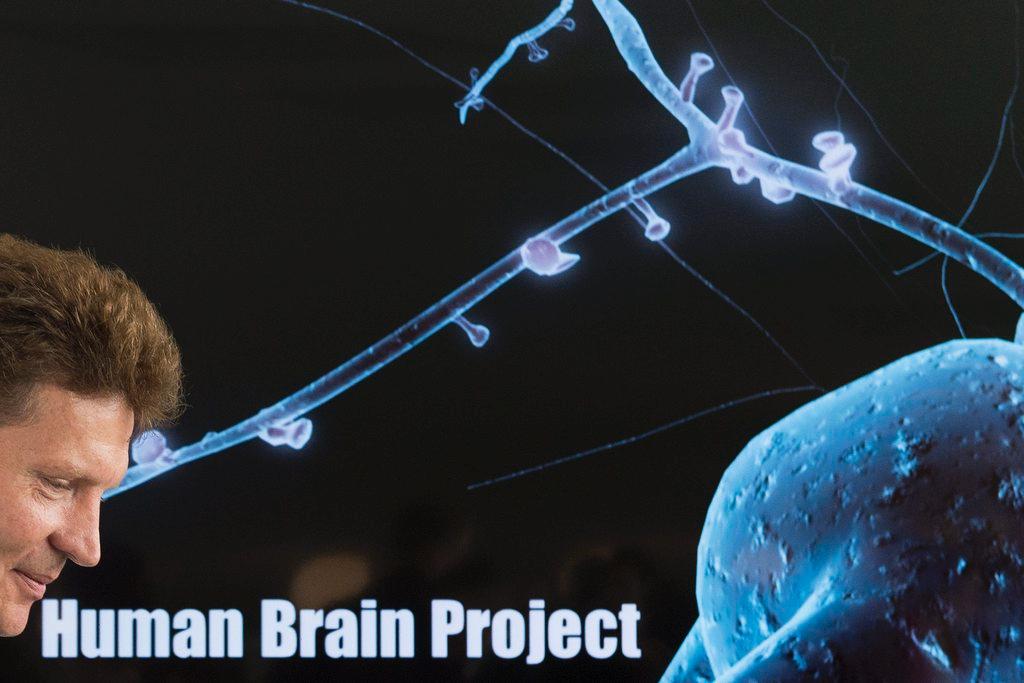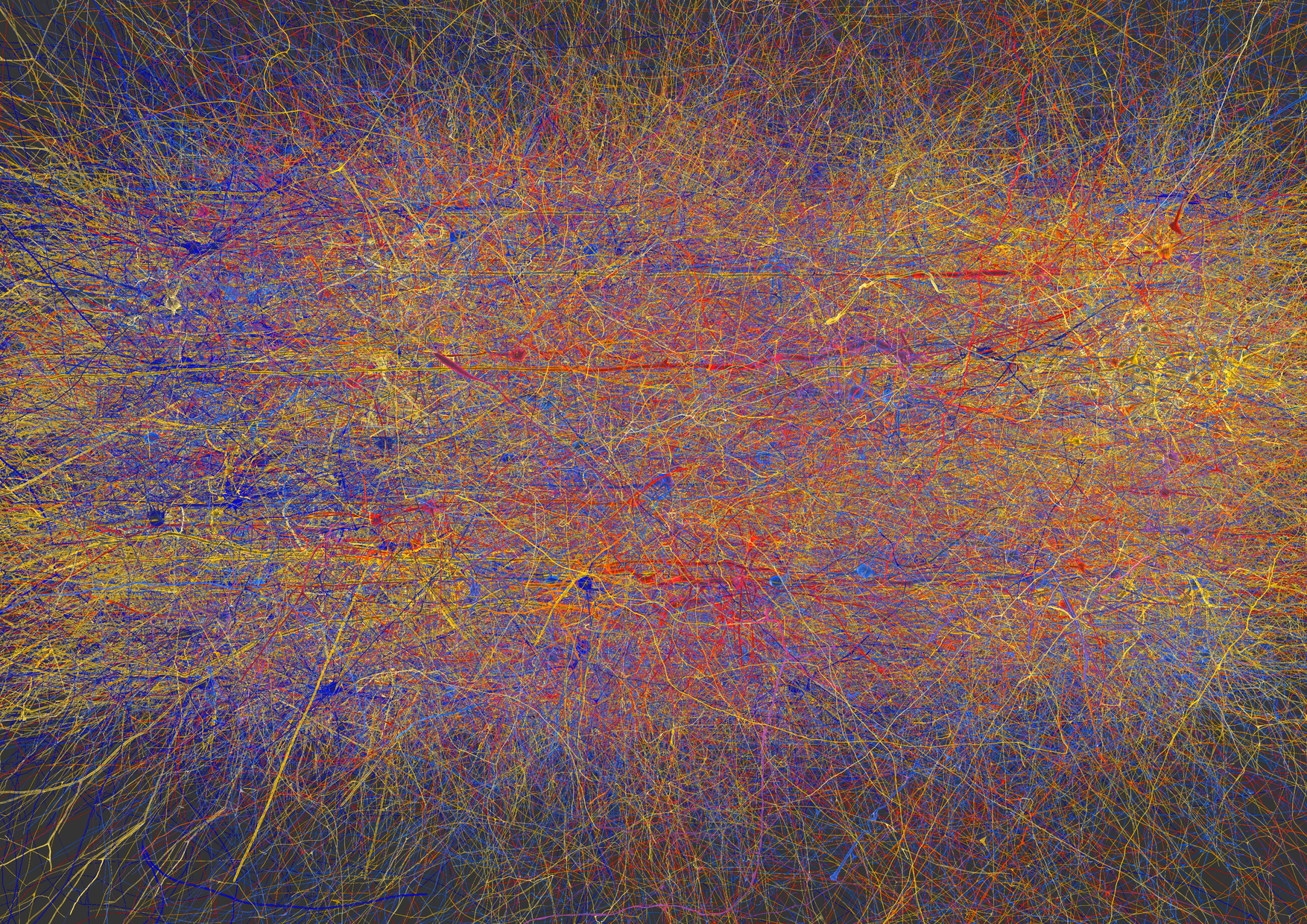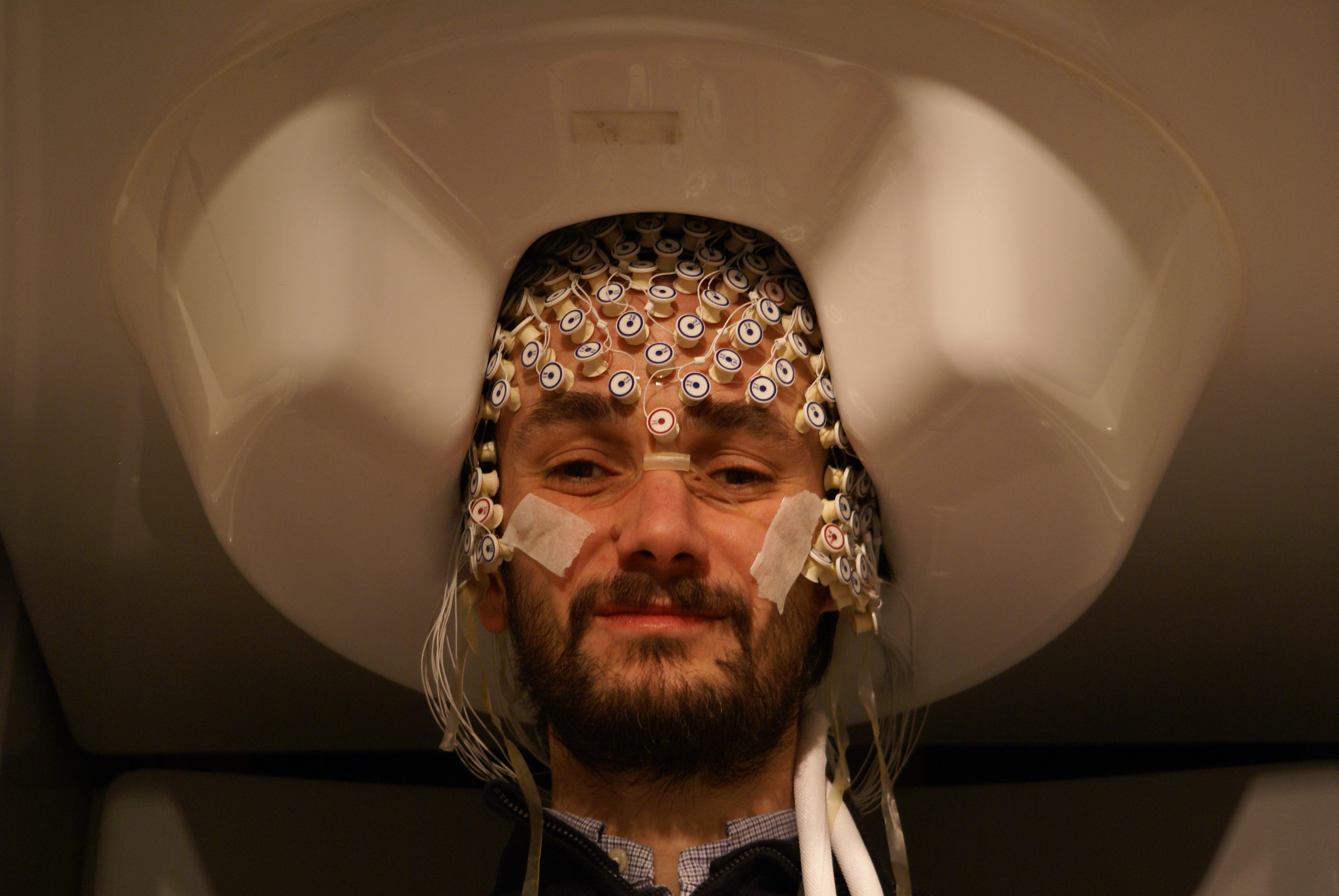Europe’s brain project is ‘back on track’

One year after the launch of the Human Brain Project (HBP) – a major European Commission-led brain mapping initiative – the project’s supporters boast ‘remarkable’ results and say the venture is on track after a war with dissenting neuroscientists.
Addressing his ‘troops’ at Heidelberg University, a weary-looking Henry Markram, one of the charismatic leaders of the Human Brain ProjectExternal link, gave a spirited review of the past 12 months’ work.
“Progress has been quite remarkable,” said Markram, who is a neuroscientist at Lausanne’s Federal Institute of Technology (EPFL) which is coordinating the project. “The plan we set out on day one is being executed remarkably well. Some [sub-projects] are even seeing steps we didn’t think would happen in the first two to three years.”
Around 400 HBP participants travelled to the German city at the end of September to listen to Markram, present their early findings and discuss the future challenges facing global collaborative brain research. The €1.1 billion (CHF1.3 billion) project has grown to 112 partners in 24 countries, mostly in Europe, but also Canada, China, Israel, Japan and the United States.
Markram said 90% of the HBP’s first-year targets from its 13-sub-projects had been met. These included the creation of a biologically realistic 3-D model of a rat’s brain, the inauguration of the European Institute for Theoretical Neuroscience in ParisExternal link and a 3-D reference atlas of the brain that has 50 times the resolution of previous such maps.
HBP researchers have also been running large-scale simulations on four supercomputers including the Swiss National Supercomputing Centre in LuganoExternal link and testing brain-inspired neuromorphic chips to rival today’s high-performance computers.
“We’ve also triggered a brain race,” said Markram.
Brain initiatives are being built up in the US, China, Japan and Australia. The US National Institutes of Health last month announced $46 million in awards to 58 research groups involved in Obama’s prominent BRAIN InitiativeExternal link, which seeks to develop new technologies for studying the brain. It hopes to spend $4.5 billion over 12 years.
“The US had plans for many years but I guess they needed a bit of a nudge,” said the HBP co-director. “It’s not going to be one individual who is going to understand the brain. It’s going to be all of us – the whole planet.”
Financial headaches resulting from Switzerland’s exclusion from the European research programme Horizon 2020 after the February 9 anti-immigration vote have been resolved for now, he added.
Last month the European Union and Switzerland agreed to allow Swiss researchers to again participate as associated and equally entitled partners in the first pillar of Horizon 2020, called “Excellent Science”External link which is aimed at boosting European research. This means they will again receive direct funding from the EU, a pot worth almost €25 billion.
“The Swiss vote was a bit of a curveball,” said Markram. “But masterful politics by the EC and Swiss government have solved that problem for the [seven EU] Flagships [initiatives] and European Research Council grants.”
Battle of ideas
However, the HBP’s glowing annual review has been overshadowed by an ongoing clash within the neuroscience community.
On July 7 a group of scientists sent an open letter to the European CommissionExternal link calling on it to reconsider the technical goals and oversight of the HBP. The letter now has over 770 signatures.
The dissenting group says the project suffers from opaque management and objectives that are not widely shared by neuroscientists. They pledged not to apply for HBP partnering projects, worth €50 million a year provided largely by the European member states’ funding bodies. The other half of funding will come from the EC.
At the heart of the row, say critics, are the HBP executive board’s plans to reduce its experimental and cognitive neuroscience arm.
“The crisis results mainly from ambiguities concerning the place of neuroscience in the HBP. From the beginning neuroscientists pointed out that large-scale simulations make little sense unless constrained by data, and used to test precise hypotheses,” wrote Yves Frégnac, research director at the CNRS and Gilles Laurent, director at the Max Planck Institute for Brain Research in Frankfurt, Germany, in a September edition of Nature magazine.External link
“The project is turning into an expensive database-management project with a hunt for new computing architectures.”
EC defence
The EC stands firmly behind the project and its team, but has outlined a series of changes it would like to see implemented.
In its recent evaluation of the HBP’s Framework Partnership AgreementExternal link, a necessary hurdle to unlock Horizon 2020 funds, EC experts recommended integrating cognitive neuroscience in line with the original proposal, revising the HBP’s governance structures and improving transparency and communication.
“I think we are now back on track. The EC is fully committed to supporting the project,” declared Thierry Van der Pyl, the EC’s director of Excellence in Science. “We are taking the open letter concerns seriously but are pretty confident that solutions can be found to make the project inclusive rather than exclusive.”
In Heidelberg, Markram said the executive board was working to ‘isolate the scientific concerns’. His message was conciliatory.
“Debate and differences of opinion are a sign of change and very important,” said Markram. “We need to embrace it and work closely together with our colleagues who have other views.”
Let’s talk
In reply the executive board has appointed a mediator, Wolfgang Marquardt, the chairman of the Jülich research centre in GermanyExternal link, whose goal is look at HBP governance structures and to implement a ‘new balanced scientific focus’. He has to prepare a report by the end of 2014.
While holding their breath to see what happens next, the signatories of the open letter say Marquardt’s appointment is a step in the right direction.
“We are very pleased with the way the European Commission has responded to our concerns and appointed a mediator. Mr Marquardt appears quite serious about facing the situation and coming up with solutions,” said Alexandre Pouget, a neuroscientist from Geneva University.
Brainy facts
– Average brain weight: 1.36kg
– 85% of the brain is the cerebrum, the front part of the brain consisting of two lateral hemispheres joined by a thick band of fibres. This part is associated with intellectual function, emotion, and personality.
– 75% of the brain is water
– 40% of the brain is dendrites and axons – the threadlike extensions of a nerve cell, which conduct impulses to and from the cell body – and 60% is neurons, or brain cells
– There are around 100 billion neurons
– There are between 1,000-10,000 synapses – neuron connections – per neuron
– The brain stops growing at age 18
– Your brain needs 20% of your blood and oxygen to function
– There are 100,000 miles of blood vessels in your brain
Source: http://www.nursingassistantcentral.com/

In compliance with the JTI standards
More: SWI swissinfo.ch certified by the Journalism Trust Initiative














You can find an overview of ongoing debates with our journalists here . Please join us!
If you want to start a conversation about a topic raised in this article or want to report factual errors, email us at english@swissinfo.ch.